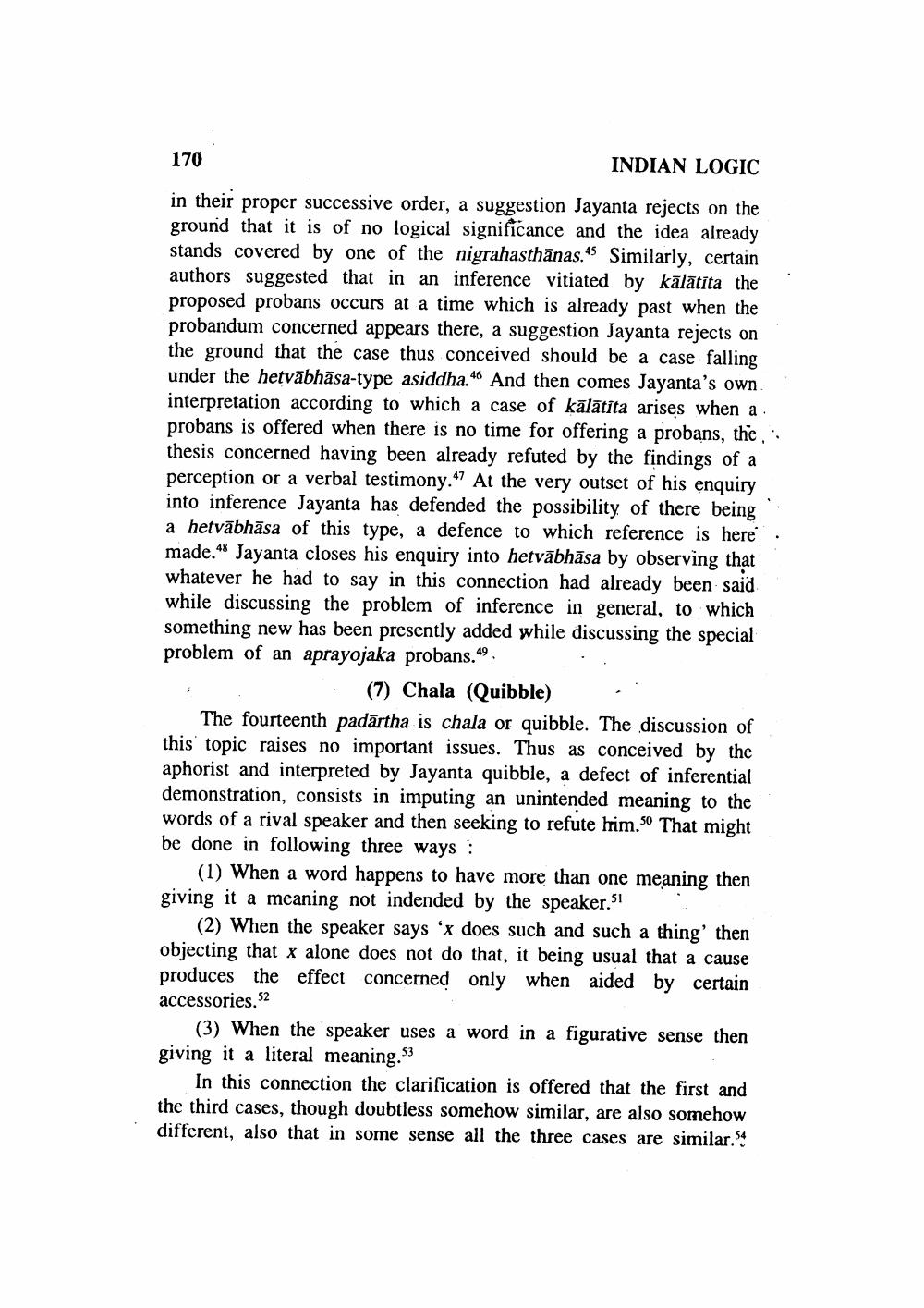________________
170
INDIAN LOGIC
in their proper successive order, a suggestion Jayanta rejects on the ground that it is of no logical significance and the idea already stands covered by one of the nigrahasthānas.45 Similarly, certain authors suggested that in an inference vitiated by kālātīta the proposed probans occurs at a time which is already past when the probandum concerned appears there, a suggestion Jayanta rejects on the ground that the case thus conceived should be a case falling under the hetvābhāsa-type asiddha.46 And then comes Jayanta's own interpretation according to which a case of kālātīta arises when a probans is offered when there is no time for offering a probans, the, - thesis concerned having been already refuted by the findings of a perception or a verbal testimony. At the very outset of his enquiry into inference Jayanta has defended the possibility of there being a hetvābhāsa of this type, a defence to which reference is here. made.48 Jayanta closes his enquiry into hetvābhāsa by observing that whatever he had to say in this connection had already been said while discussing the problem of inference in general, to which something new has been presently added while discussing the special problem of an aprayojaka probans.“
(7) Chala (Quibble) The fourteenth padārtha is chala or quibble. The discussion of this topic raises no important issues. Thus as conceived by the aphorist and interpreted by Jayanta quibble, a defect of inferential demonstration, consists in imputing an unintended meaning to the words of a rival speaker and then seeking to refute hrim.So That might be done in following three ways:
(1) When a word happens to have more than one meaning then giving it a meaning not indended by the speaker.!
(2) When the speaker says 'x does such and such a thing' then objecting that x alone does not do that, it being usual that a cause produces the effect concerned only when aided by certain accessories,52
(3) When the speaker uses a word in a figurative sense then giving it a literal meaning.53
In this connection the clarification is offered that the first and the third cases, though doubtless somehow similar, are also somehow different, also that in some sense all the three cases are similar.




